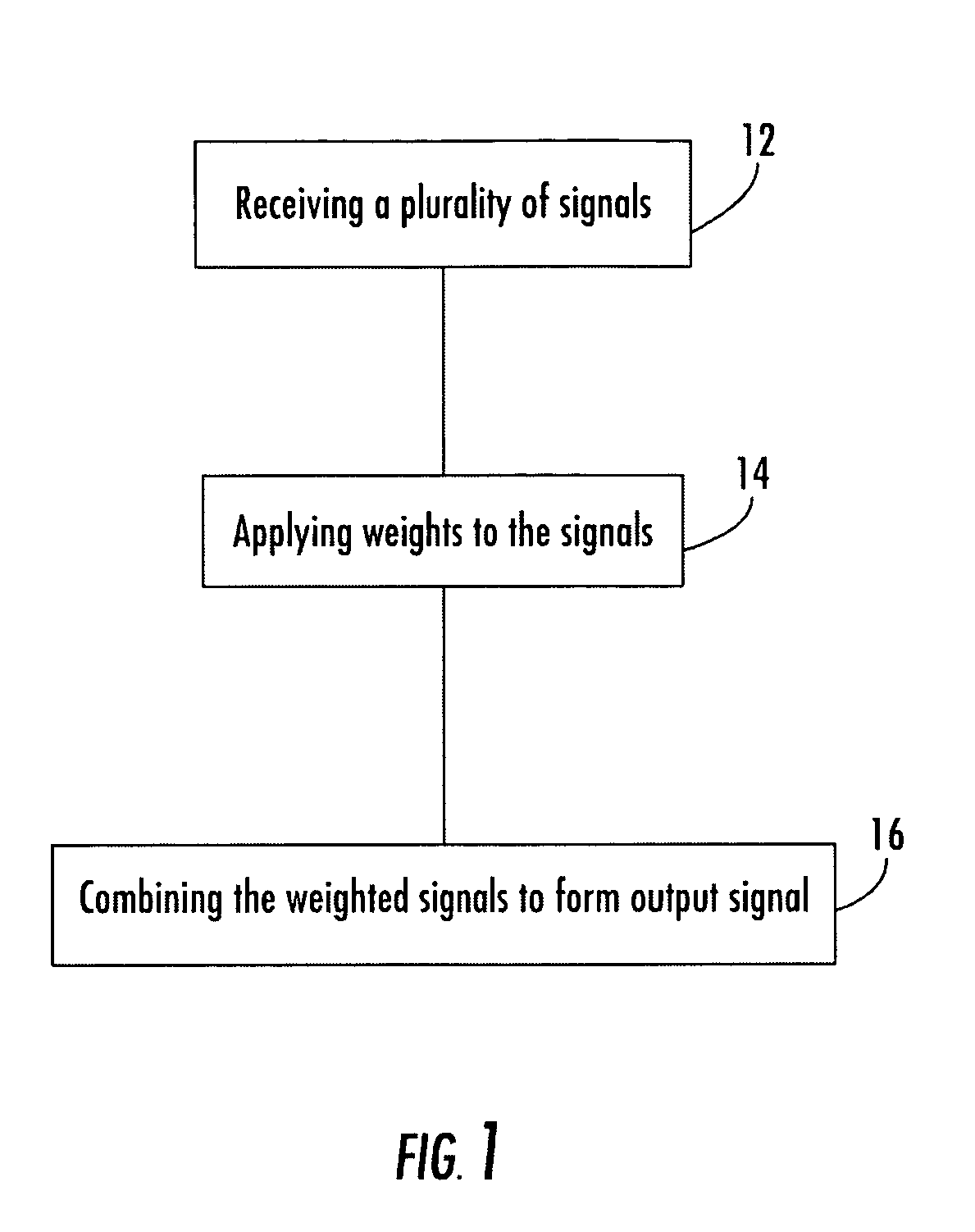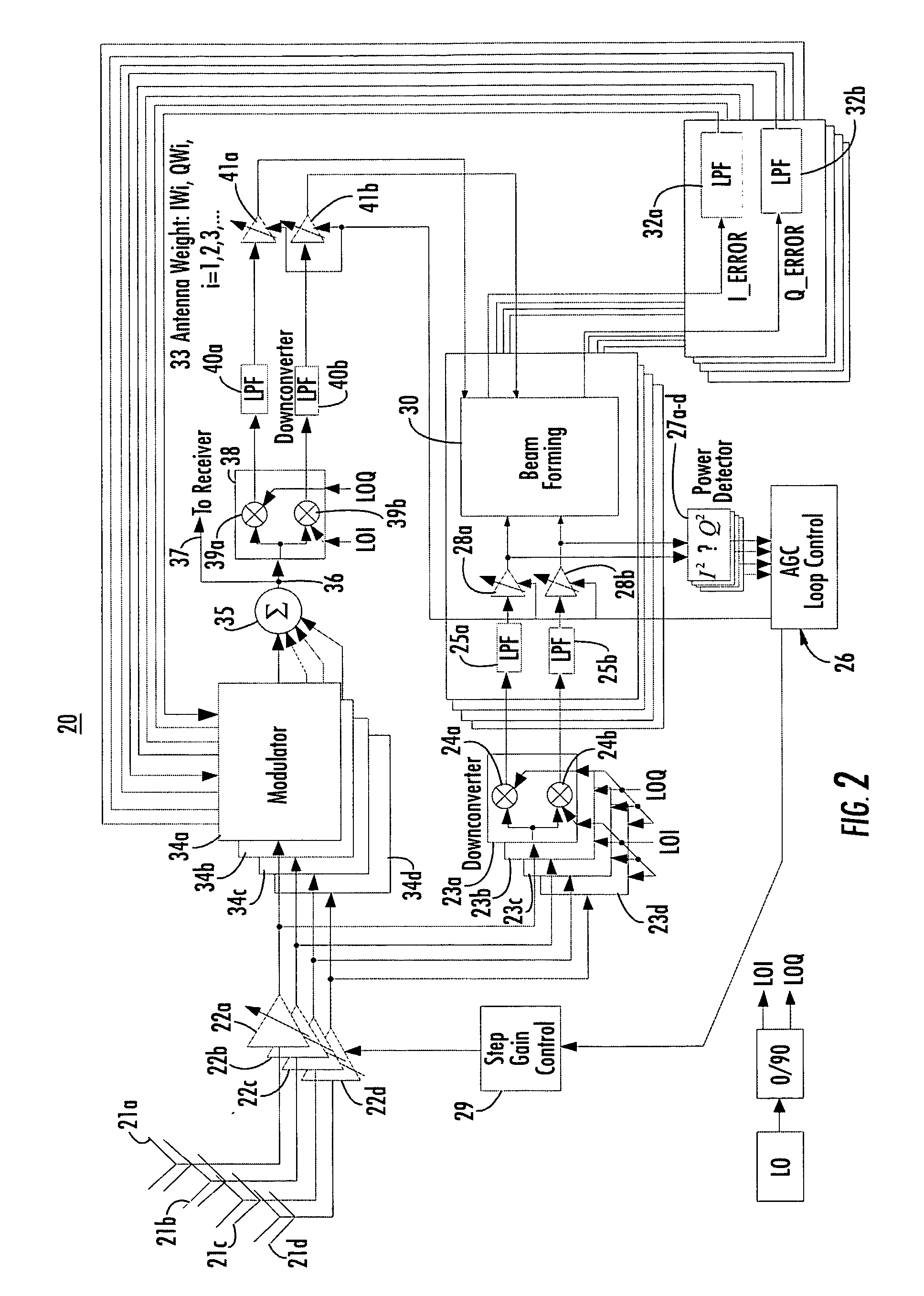Wireless communication system using a plurality of antenna elements with adaptive weighting and combining techniques
a technology of antenna elements and wireless communication, applied in the field of wireless communication systems, can solve the problems of multipath interference effects, wlan performance can be greatly degraded, wlans often fall short of the expected operating range, etc., and achieve the effect of reducing interference arrival, increasing operating range, and simplifying interfa
- Summary
- Abstract
- Description
- Claims
- Application Information
AI Technical Summary
Benefits of technology
Problems solved by technology
Method used
Image
Examples
Embodiment Construction
[0053] Reference will now be made in greater detail to a preferred embodiment of the invention, an example of which is illustrated in the accompanying drawings. Wherever possible, the same reference numerals will be used throughout the drawings and the description to refer to the same or like parts.
[0054]FIG. 1 is a flow diagram of a method for operating a wireless communication beam forming receiver 10 in accordance with the teachings of the present inventions. In block 12, a plurality of signals are received by the wireless communication receiver. In block 14, weights are applied to the plurality of signals. In block 16, the weighted signals are combined to form an output signal. The weights used in the weighting step are adjusted to increase power in output signal of in-band components and decrease power in the signal out-of-band components.
[0055]FIG. 2 is an illustration of wireless receive beam forming system including closed loop implementation of MRC for performing the meth...
PUM
 Login to View More
Login to View More Abstract
Description
Claims
Application Information
 Login to View More
Login to View More - R&D
- Intellectual Property
- Life Sciences
- Materials
- Tech Scout
- Unparalleled Data Quality
- Higher Quality Content
- 60% Fewer Hallucinations
Browse by: Latest US Patents, China's latest patents, Technical Efficacy Thesaurus, Application Domain, Technology Topic, Popular Technical Reports.
© 2025 PatSnap. All rights reserved.Legal|Privacy policy|Modern Slavery Act Transparency Statement|Sitemap|About US| Contact US: help@patsnap.com



